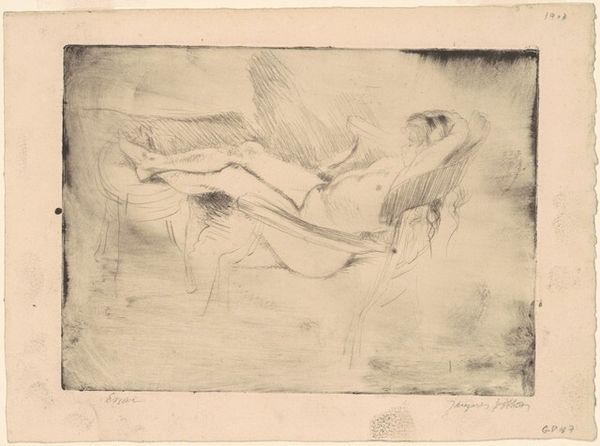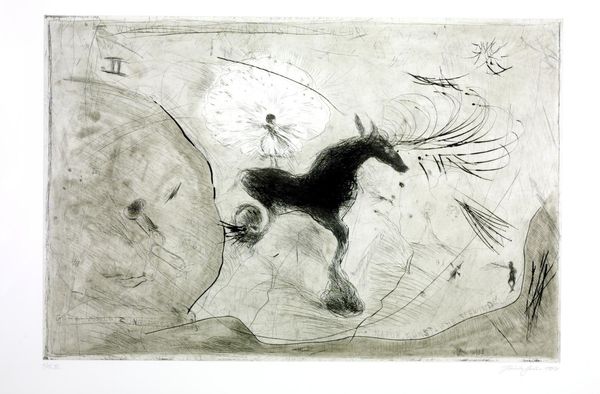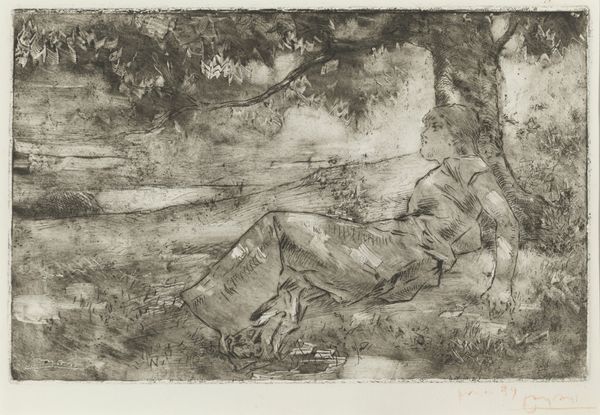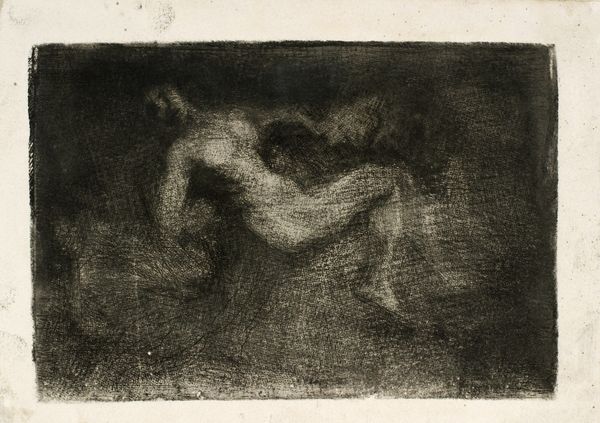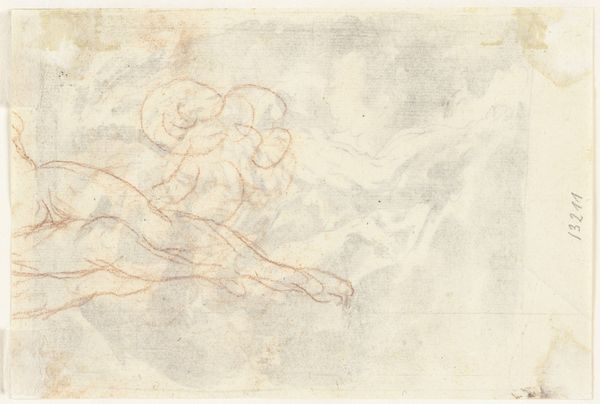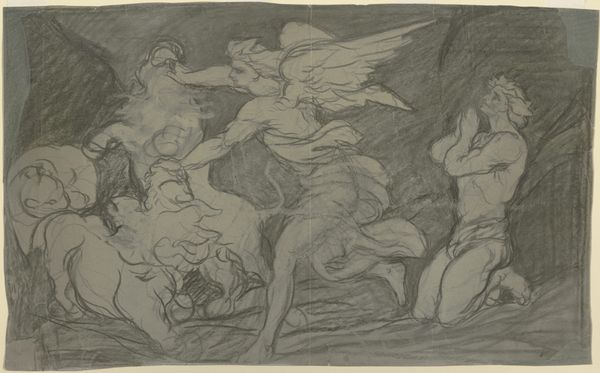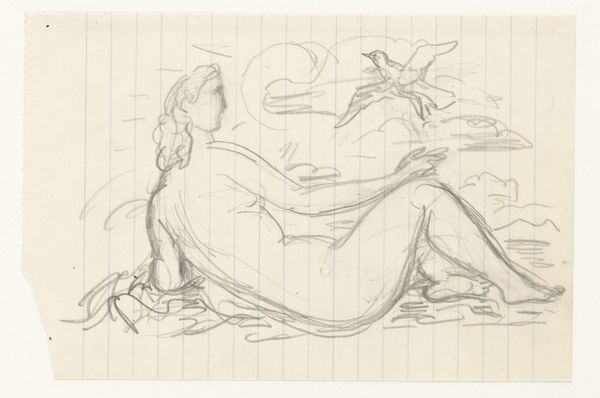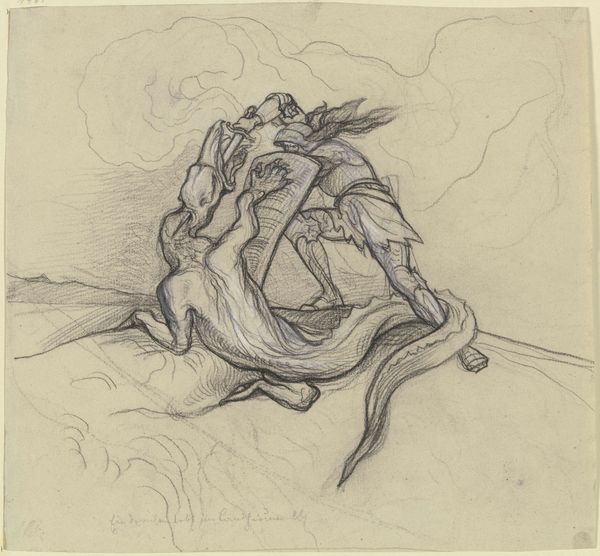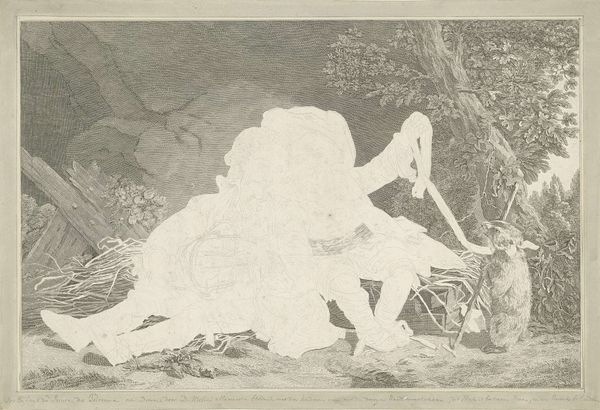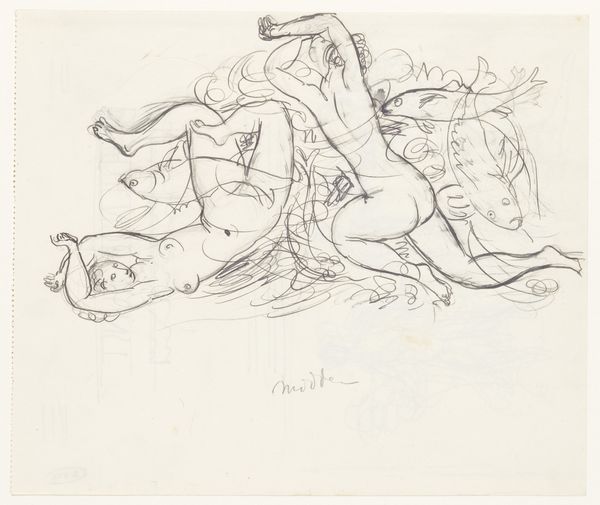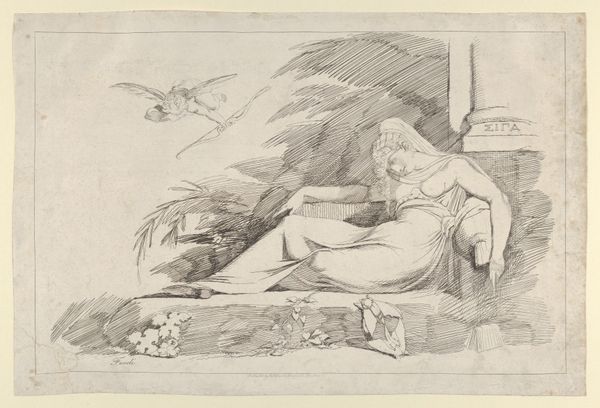
drawing, pencil, pen, charcoal
#
portrait
#
drawing
#
allegory
#
charcoal drawing
#
romanticism
#
pencil
#
pen
#
charcoal
#
nude
Dimensions: 331 × 513 mm
Copyright: Public Domain
Editor: This is John Downman's "Cupid and Swans," a drawing of unknown date currently at the Art Institute of Chicago, rendered in pen, pencil, and charcoal. The soft tonality and curving lines give it a very dreamlike quality, almost like it’s emerging from mist. What immediately stands out to me is the rather unconventional pairing of Cupid with swans rather than doves or pigeons, so I am curious – what do you make of this piece? Curator: It is indeed the formal structure of this piece that captures our attention. Notice the intricate balance achieved through line and form. The soft charcoal creates subtle tonal gradations across the subjects, with the sinuous curves of the swans' necks mirroring and amplifying the languid pose of the nude cupid. Editor: So you're saying the visual rhythm created by these repeated curves is key to the work's success? Curator: Precisely. Consider the weight and distribution of light – how it softly defines the contours and imbues the figures with volume, and how this visual interplay contributes to a cohesive whole. What is interesting about these Romantic artists’ explorations of ideal forms is their basis in observation and real bodies, and how their selective process abstracts them. Editor: The Cupid seems almost secondary to the swans themselves in terms of sheer size, yet all the lines still lead to him... Curator: Exactly. It's a study in contrasting textures – the feathery softness of the swans against the smoothness of Cupid’s form, brought together by their unity of material, reinforcing the allegorical themes of innocence, beauty, and idealized desire. Editor: That's fascinating! Focusing on just those visual elements really unlocks so much meaning. Thanks for the perspective! Curator: My pleasure. By analyzing the visual architecture of an artwork, we can decode its essence.
Comments
No comments
Be the first to comment and join the conversation on the ultimate creative platform.
